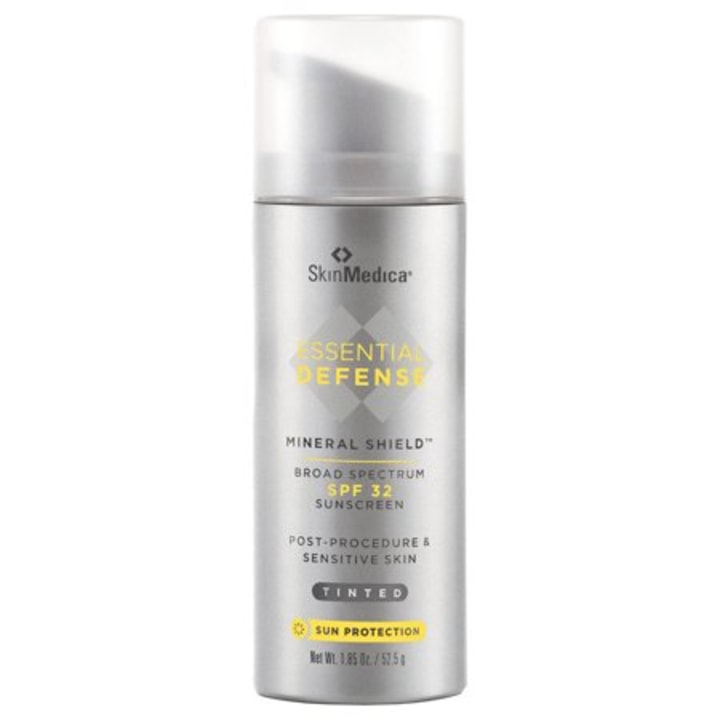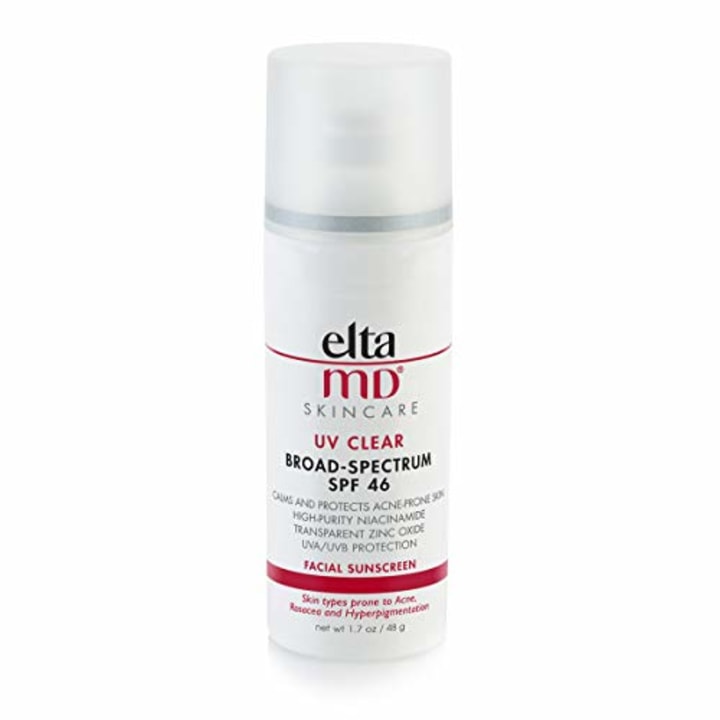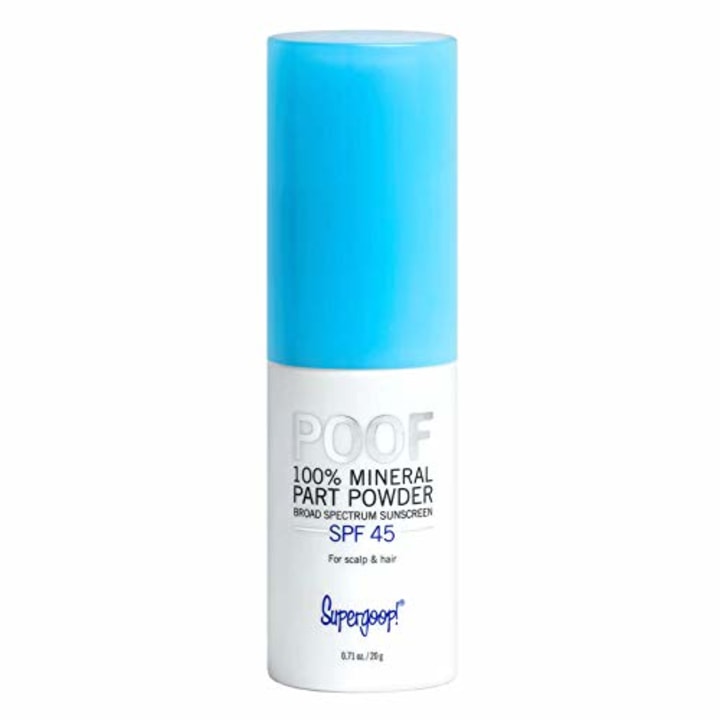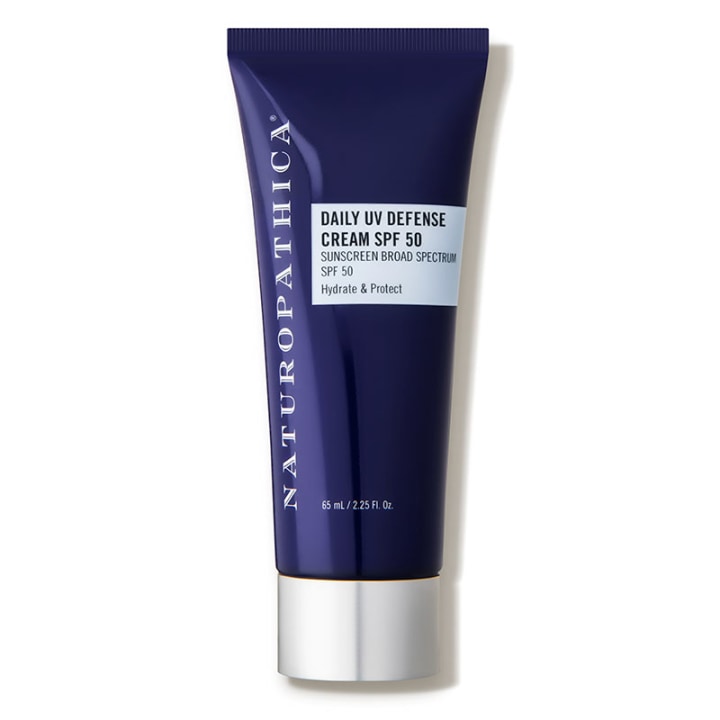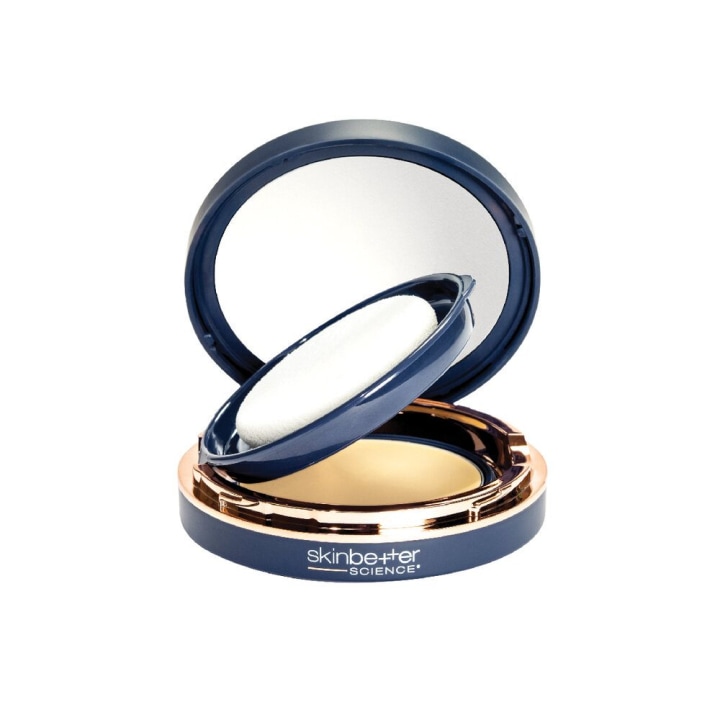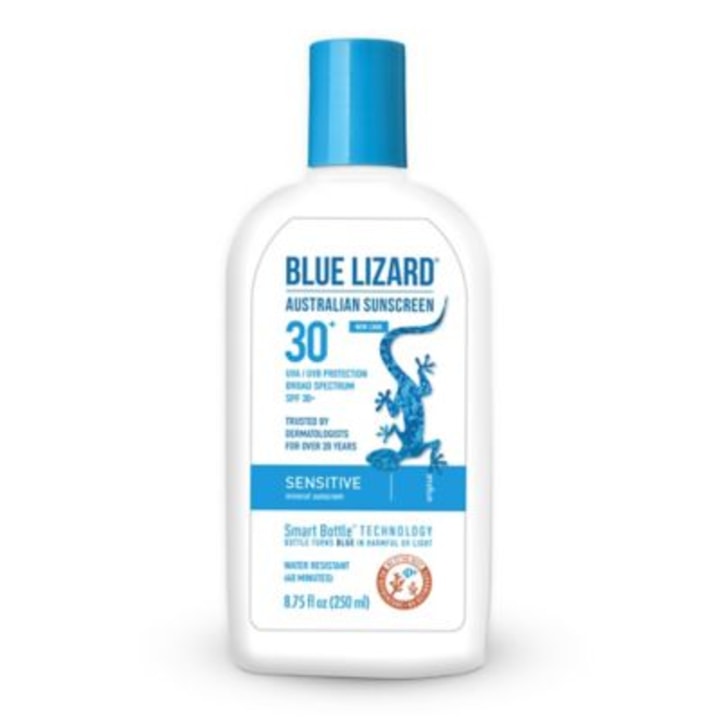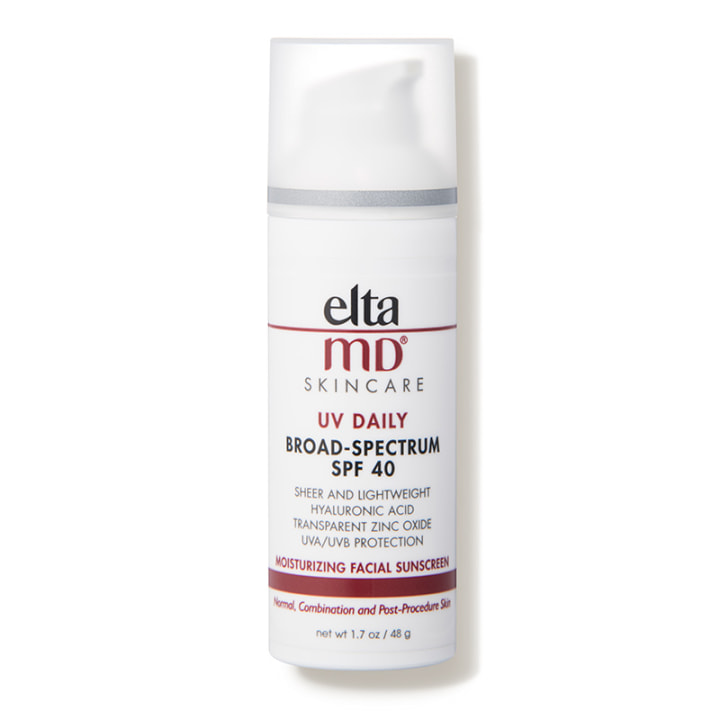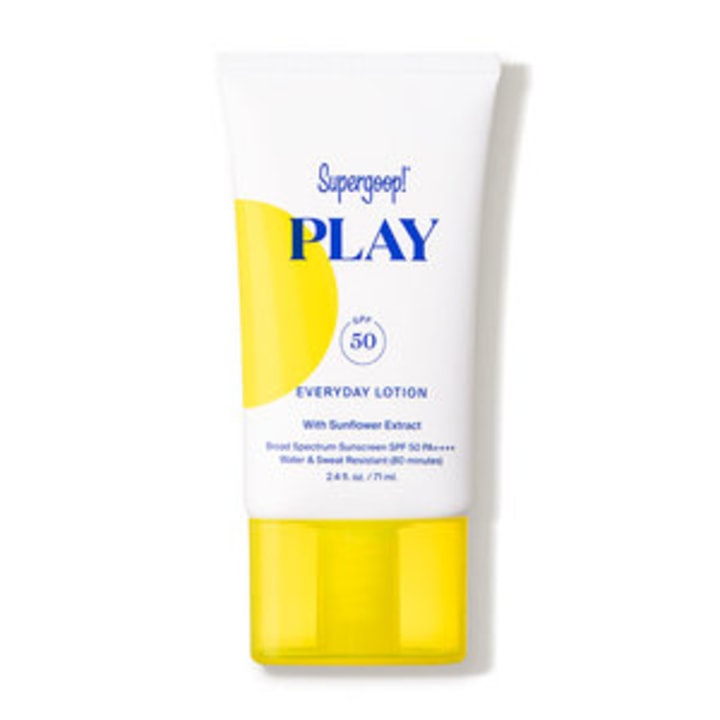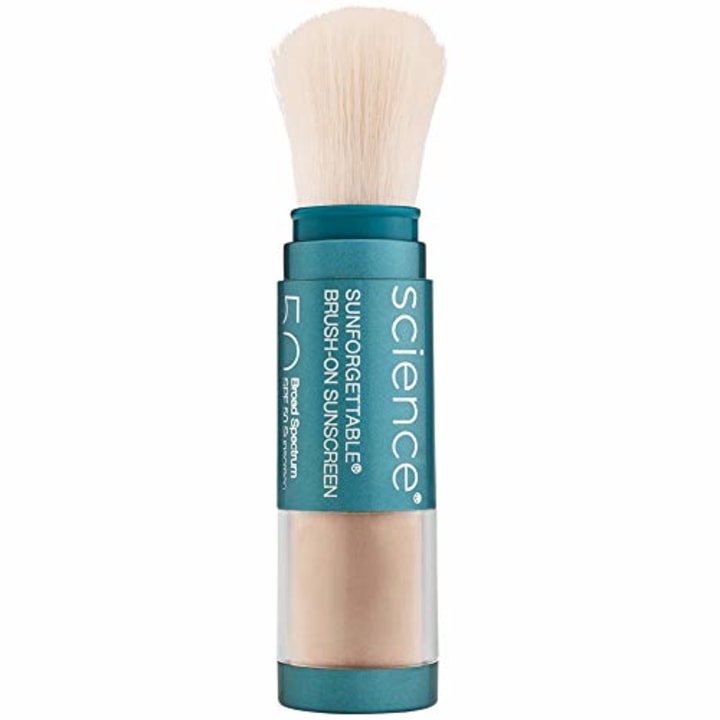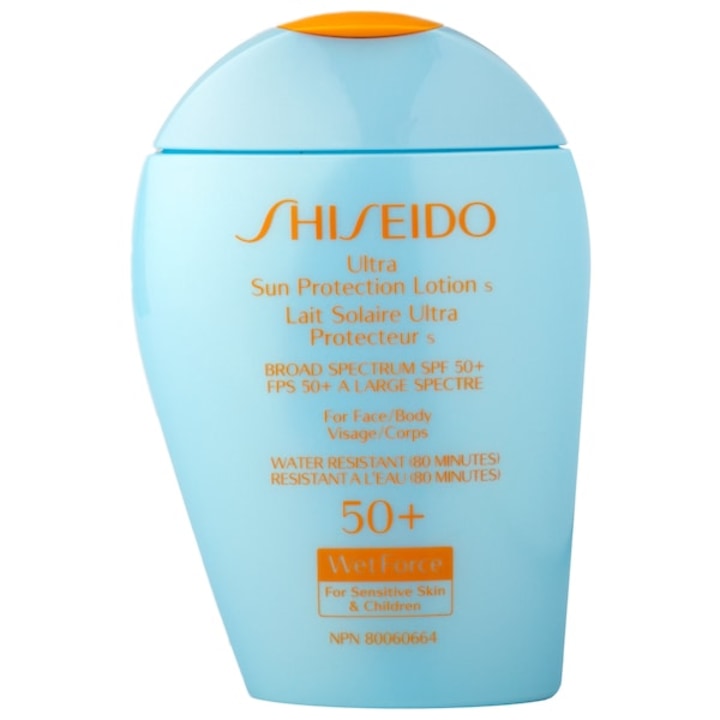After months of quarantine, you have likely become acclimated to the new norm of working from home, social distancing and limited time spent in public spaces. Perhaps you have transformed your backyard into a summer camp for adults complete with evenings spent around a fire pit drinking wine from your decanter. At the same time, your favorite movie plays on your outdoor projector screen with the high-quality sound emitting from your portable Bluetooth speakers.
While you likely know how imperative it is to wear sunscreen outdoors and reapply your SPF after you emerge from the water or work up a sweat. However, now that people who can work from home spend most of their days indoors, does that mean you need to wear sunscreen inside? And what is the best sunscreen for your face while working indoors? To discover the answer to these questions and more, we consulted medical experts to find out how to shop for your next sunscreen, whether you choose to wear SPF indoors or not.
IN THIS ARTICLE Why wear sunscreen indoors | Chemical vs mineral sunscreen | The case against SPF indoors | Best sunscreens of 2020
Why wear sunscreen indoors
According to four of the five dermatologists we interviewed, you should wear sunscreen indoors. Why? If you're sitting near windows — or in front of a computer screen — you're exposing yourself to potentially skin-damaging light. There are three main reasons why experts say you should wear SPF indoors, all involving what you’re exposed to:
- Ultraviolet A (UVA) rays
- Ultraviolet B (UVB) rays
- Blue light from smart devices, computers and TVs
Sunscreen vs Ultraviolet A (UVA) rays
Ultraviolet A rays, which can cause signs of aging like loss of elasticity and wrinkles, "can penetrate windows and cloud cover," according to the nonprofit Skin Cancer Foundation. Unfortunately, not all windows are treated with protection from the sun's harsh rays. Unless you're in a windowless room, you may want to consider slathering on SPF.
And don’t think that a gloomy winter day or summer thunderstorms are reasons to get lax about applying sunscreen indoors, says Robyn Gmyrek, MD. of Park View Laser Dermatology. The board-certified dermatologist says it is “crucial” to wear a broad spectrum sunscreen while indoors all year long. "UVA light causes premature skin aging by breaking down collagen and elastic tissue, contributing to the formation of skin cancers. It does not cause tanning, so you may be unaware of how much UVA exposure you are getting," says Gmyrek.
Sunscreen vs Ultraviolet B (UVB) rays
Then there are Ultraviolet B rays, which can damage the skin's DNA, creating the inflammatory response that leads to red sunburns, explains Orit Markowitz, MD, director of Pigmented Lesions and Skin Cancer at Mount Sinai Hospital."A sunburn peels when the cells are beyond repair and die off. Those cells that remain increasingly get damaged over time through exposure, resulting in skin cancer," she says.
If you ask me, the solution to this problem is simple: Get out of the sun.
Kenneth Howe, MD, board-certified dermatologist
Sunscreen vs blue light
According to Markowitz, the blue light emitted from digital screens — including your computer, phone, tablet and TV — can affect your skin in two ways:
- Blue light can increase the production of melanin or pigmentation in the skin, which could lead to melasma and age spots.
- Blue light can also create free radicals, which might cause inflammation and lead to the breakdown of collagen and elastic tissue in the skin.
Is mineral or physical sunscreen better?
If you choose to wear sunscreen indoors, your next step is to decide what formulation meets your skin and SPF needs. According to Gymrek, both chemical and physical blocks are protective against UVA and UVB — as long as they’re labeled SPF 30 or higher and broad spectrum.
Mineral or physical sunscreens
Physical blockers use iron oxide, zinc oxide or titanium dioxide as their active ingredients, says Gymrek.
“These minerals create a physical barrier, blocking the ultraviolet and the blue light from reaching the skin surface,” she explains.Blue light filters on your screens are also very helpful as are blue light blocking glasses.
They’re designed to sit on top of the skin, meaning they’re less likely to clog your pores — a good option for oily and acne-prone skin. However, be careful if you use a mineral sunscreen and topical acne medication, cautions Hadley King, MD, a board-certified dermatologist. The combination of the two can cause dryness because it is non-comedogenic.
Chemical sunscreens
According to the Skin Cancer Foundation, chemical sunscreens “absorb UV rays before they can damage your skin.” With that in mind, they can also absorb into your skin, in contrast to physical sunscreens, which sit atop your skin. That absorption, King noted, could become problematic for your skin. Why? Studies on rats and mice have shown that some sunscreen ingredients negatively impact the reproductive systems, ovaries, mammary glands, testicules and prostates and endocrine systems. The concern is that if these toxic ingredients can absorb into the bloodstream, it could cause long-term health implications in humans. The FDA conducted followup research in 2020 and learned that active sunscreen ingredients "can remain in the body for extended periods of time" after one use.
On top of that, chemical sunscreens have negative implications for the environment and marine life, which is why Hawaii is banning the sale of sunblocks with oxybenzone and octinoxate. The law goes into effect on Jan. 1, 2021.
Should you avoid chemical sunscreens?
“We don’t have firm evidence that they (chemical sunscreens) are doing anything that bad (to humans). We have these animal studies, but no, we don’t have firm data that something sinister is afoot, but I think we just have more questions,” says King. “We don’t really know yet if they’re doing anything harmful once they get absorbed.”
King says that “the best sunscreen for you is the one that you’ll actually wear,” whether it’s a chemical or mineral formula. She personally uses and recommends mineral sunblocks to her patients. “With physical blockers, there’s fewer questions and concerns about the safety — both for the environment and the body — and you really don’t have to sacrifice the formula anymore,” she adds.
If you commit to wearing sunscreen indoors, then the pros suggest you reapply every two to six hours, depending on the instructions on the label. The sunscreen might feel like it’s longer-lasting because it’s not absorbing as much UV radiation, so it’s best to follow direction on this one, rather than intuition.
What if you don't want to wear sunscreen indoors?
"If you ask me, the solution to this problem is simple: Get out of the sun. Draw the curtains or move your chair. That's what I've always done. I didn't have to get board-certified in dermatology to learn this simple trick," says Kenneth Howe, MD, a board-certified dermatologist at Wexler Dermatology. If you still want to sit in front of a window, Howe says, "you should probably put on some sunscreen. It's not the best way to deal with the problem, though. I don't don a flame-retardant suit so I can sit by an open oven door."
When you can’t avoid the sun — while at the beach or out running — then “yes, certainly the risk of skin cancer far out-weights any theoretical concern about exposure to chemical sunscreens,” Howe agrees. “But when you're inside your own house? Just draw the curtains or move away,” he says. “If you simply stay out of sunlight penetrating your windows, no further indoor precautions are necessary.” Unless you're working from home in a windowless room, then most of the medical experts we’ve consulted with advise that you wear sunscreen indoors to protect yourself from the sun's harsh rays.
Best sunscreens to wear indoors in 2020
To help you find the best sunscreen for your indoor use, here are what the dermatologists we spoke to recommended.
1. SkinMedica Essential Defense Mineral Shield
Gymrek and Dendy Engelman, MD, a board-certified dermatologist in New York, are fans of this non-comedogenic, hypoallergenic, oil-, paraben- and fragrance-free SPF. It is a sheer sunscreen that has physical blockers — titanium dioxide and zinc — making it “good for people with sensitive skin and for blue light,” says Engelman. There’s also caffeine in it, which has a low toxicity profile and antioxidant powers to help fight free radicals, according to a study in the US National Library of Medicine.
2. EltaMD UV Clear Broad-Spectrum
“Sunscreen is a daily essential for all skin tones, whether you're indoors or outdoors,” says Engelman. Her pick is a great sunscreen for acne and oily skin types because lactic acid will gently exfoliate the skin and regulate sebum build-up. Gymrek wears the niacinamide-infused sunscreen every morning, noting it dries down quickly. Howe says this is a “great versatile SPF that feels great and everyone loves.”
3. Supergoop Poof Part Powder
“It's easy to forget that our scalps need sun protection,” says Engelman. Her recommendation includes 24.5-percent zinc oxide and won’t weigh down your hair. “It feels similar to dry shampoo and provides non-greasy UV protection,” she says. After you finish styling your hair, mist the sunblock along your hairline, part it and then massage it into your scalp with either a brush or your fingertips.
4. Naturopathica Daily UV Defense Cream
“A personal favorite for morning use with my dry skin is Naturopathica’s Daily UV Defense Cream SPF 50 for its smooth-but-thick effect — and its smells divine,” says Markowitz. The full-spectrum mineral sunscreen has green tea extract, which boasts antioxidant and anti-aging benefits for the skin. Engelman suggests that you cover up any exposed skin with about an ounce of sunscreen at a time, although you can adjust the amount based on your body type.
5. Skinbetter SunBetter Advanced Mineral Protection
Gymrek “loves” to use this stick sunscreen before exercising because it “never sweats into my eyes.” Skinbetter’s sunblock applies creamy and white and “rubs in easily and leaves no white residue” on her skin. The water-resistant SPF is both a mineral and a physical blocking sunscreen, thanks to the combination of titanium dioxide and zinc oxide.
6. Blue Lizard Sensitive Skin Sunscreen
“It's a common misconception that you only need sunscreen in the summer months, but make no mistake: we can get sun damage at any time in the year, including in the cold months,” says Engelman. “If our skin is unprotected and exposed to the sun's rays for even 15 minutes a day, that can have a very real cumulative impact.”
Rest easy knowing there are sunscreens that are specially formulated for those with a sensitive skin type to use year-round. Gymrek and Markowitz recommend Blue Lizard Sensitive Skin sunscreen, a non-sticky option that offers broad-spectrum (UVA and UVB) protection and that is mineral-based.
7. EltaMD UV Daily Broad Spectrum
Markowitz calls this mineral sunscreen a “light-weight and effective” option for those who want to layer their sunblock. Although all skin types — dry, combination, oily, sensitive and normal — hyaluronic acid and vitamin E hydrates your skin, so it’s best suited for those with dry, normal or sensitive skin.
8. Supergoop! Play Everyday
She also recommends the Supergoop! sunblock to patients with combination skin “who like a smooth, but robust sunscreen.” Before you head out to the grocery store, rub this cruelty-free, reef-safe and vegan SPF gently onto your face and let it sit for about 20 minutes before you put on your antimicrobial face mask. Sunflower extract protects from environmental damage while rosemary leaf extract calms your complexion.
9. Colorscience Sunforgettable Total Protection Brush-On Shield
Francesca Fusco, MD, a board-certified dermatologist of Wexler Dermatology, recommends that you brush on this full-spectrum mineral sunscreen with SPF 50. Available in four shades — ranging from Fair to Dark — you can wear this water-resistant sunscreen by itself or layered over your makeup. “It’s not always easy to reapply sunscreen if you’re indoors in a restaurant or at a (pre-coronavirus) party. Color Science SPF powder can be brushed on easily and quickly,” she says.
10. Shiseido Ultimate Sun Protector Lotion
Engelman advises that you aim to use broad-spectrum coverage, ideally with SPF 50 or higher. Try Howe’s recommendation, which aligns with her suggestion. Shisideo’s hypoallergenic mineral sunscreen is free of parabens, fragrances and alcohol, making it a solid choice for those with sensitive skin. He says the sunblock “goes on really nicely with a smooth, non-tacky finish” and is popular with surfers.
Catch up on Select's in-depth coverage of personal finance, tech and tools, wellness and more, and follow us on Facebook, Instagram and Twitter to stay up to date.







